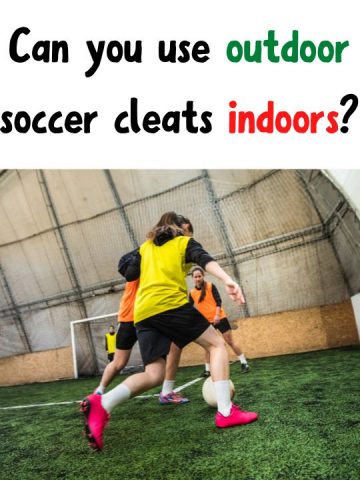Soccer is a globally played sport that mostly deals with kicking and passing inflated balls with the aim of scoring goals. Most soccer lovers, especially amateur players don’t always care much about what they wear on their feet while playing the game.
It is common to hear people interested in playing futsal often ask if they can use outdoor soccer cleats. Questions like these aren’t out of place since soccer cleats often have comparable designs.
Key Takeaways
- The major difference between indoor and outdoor soccer cleats is found in their soles
- The laws of the game clearly say that indoor soccer shoes should have flat soles which makes it impossible to wear outdoor soccer for indoor games
- Another reason why it is wrong to use outdoor soccer cleats on indoor soccer games is that the studs can ruin the playing surface
Cleats are an essential part of soccer and knowing the right kind of cleat to buy and use is also important. Soccer cleats are skillfully designed to help players play optimally while protecting them from injuries during both training and competitive matches.
Many variants of soccer are in existence and each of them requires an array of distinct equipment. For example, in futsal, players can’t play comfortably while wearing spiked soccer cleats—a feature that outdoor soccer players can’t do without—because of the nature of the playing surface.
Also, in beach soccer, players aren’t even allowed to wear soccer cleats since it is played on sandy fields where the use of shoes can cause lag. Soccer players require agility and foot skills, both of which can be affected by the nature of the cleats they wear.
Since soccer players do a lot of running on the pitch, they need cleats that can adequately support and protect their feet while providing balance and enhanced ball control.
A cleat intended to be used in playing soccer must be able to provide the right level of traction on the surface it is going to be used. So, can you use outdoor soccer cleats indoors? Keep reading to find out.
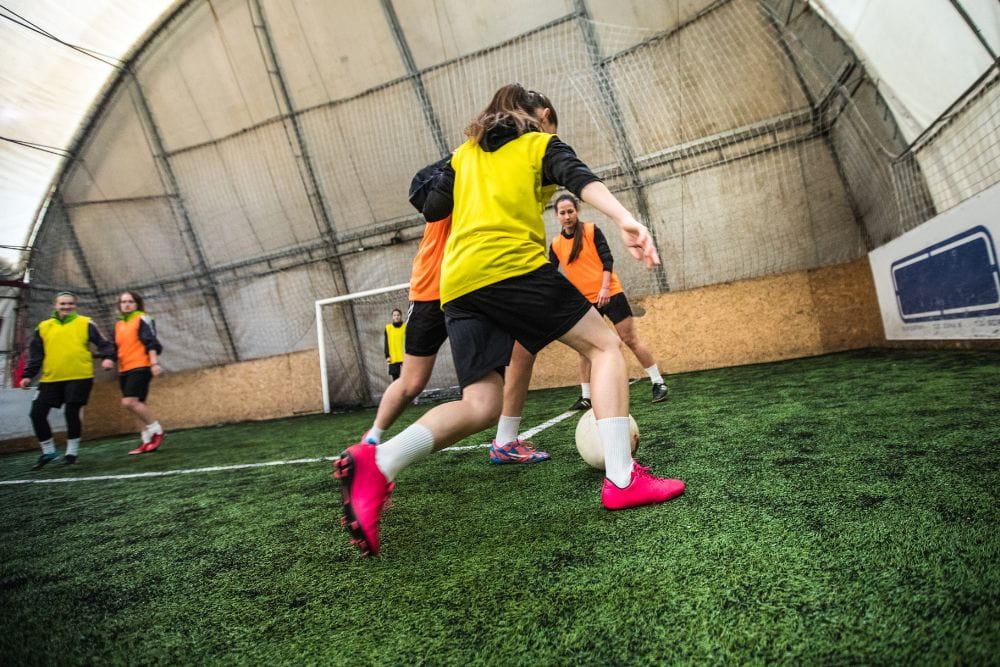
Quick Navigation
The right answer to this question is it depends. If you are playing soccer as a hobby with your friends (in a private facility), you are allowed to wear anything you want. However, when playing soccer professionally (or using a rented or shared facility), there are restrictions to what you can wear.
The surface of some indoor soccer fields is made of polished wood. The studs of outdoor soccer cleats will ruin the wooden surface.
Other forms of indoor soccer are played on AstroTurf. These are synthetic grasses that are delicate. Studs of outdoor soccer cleats will dig into the AstroTurf and ruin them too.
For these reasons, match officials will not allow you to wear outdoor soccer cleats for indoor games. Also, using outdoor soccer cleats for indoor soccer will not only ruin the playing surface but may also lead to blisters or make you more vulnerable to injuries.
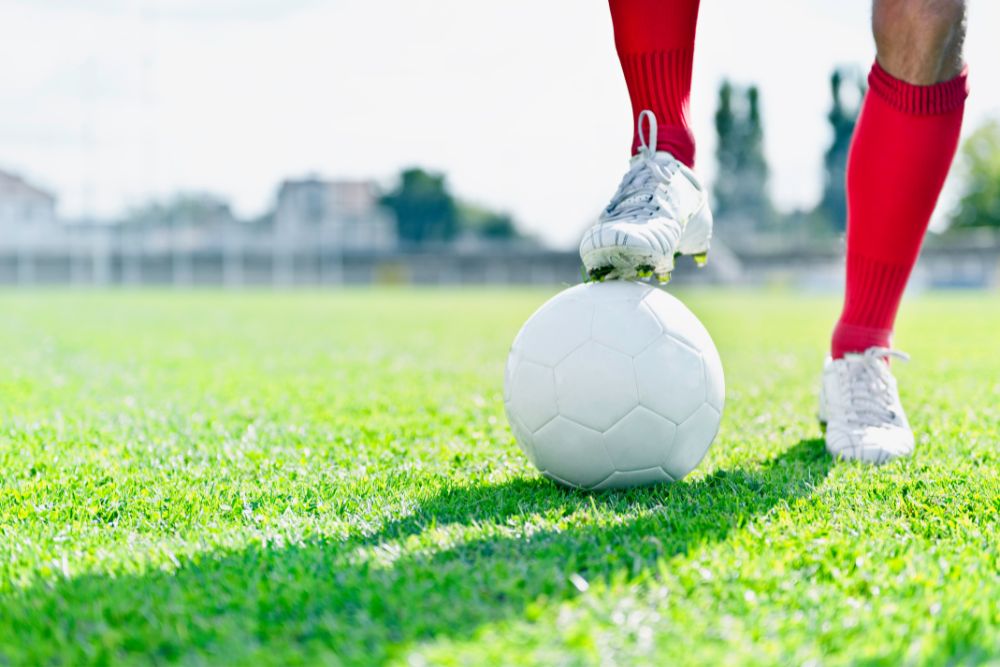
The intended playing surface should be of optimal concern to you while purchasing new pairs of soccer cleats. Indoor and outdoor soccer cleats are designed differently because of the nature of the surface they are used on.
Futsal laws of the game by FIFA states that suitable footwear for futsal should include canvas, gymnastic shoes, or soft leather training shoes with soles made of rubber or other similar material.
This means that outdoor soccer cleats with rubber soles can be used for playing on indoor arenas with AstroTurf surfaces. The major feature that differentiates outdoor cleats from indoor cleats is their soles.
Outdoor cleats aren’t recommended for use in indoor arenas because they usually have higher lugs that maintain balance by digging into the natural outdoor pitches.
It is difficult to find soccer cleats that can work perfectly in both indoor and outdoor arenas. Before expanding on some of the reasons why outdoor soccer cleats cannot be comfortably used indoors, let’s explain the various surfaces on which soccer is often played.
Soccer cleats are designed for different surfaces and understanding the nature of such surfaces will help you make the right choice of cleats when buying a new pair.
- Turf surface
These are playing fields with artificial grass cover. They are popular in modern soccer which is why most outdoor soccer cleats are designed to be utilized on them.
Soccer cleats designed for both AstroTurf and artificial grass have a specific stud pattern. Such cleats are fitted with short cone-shaped studs for enhanced traction on the turf.
Also, the shape of the studs will minimize damage to the artificial grass. Although the studs offer adequate grip on turf, they don’t do well on natural grass surfaces.
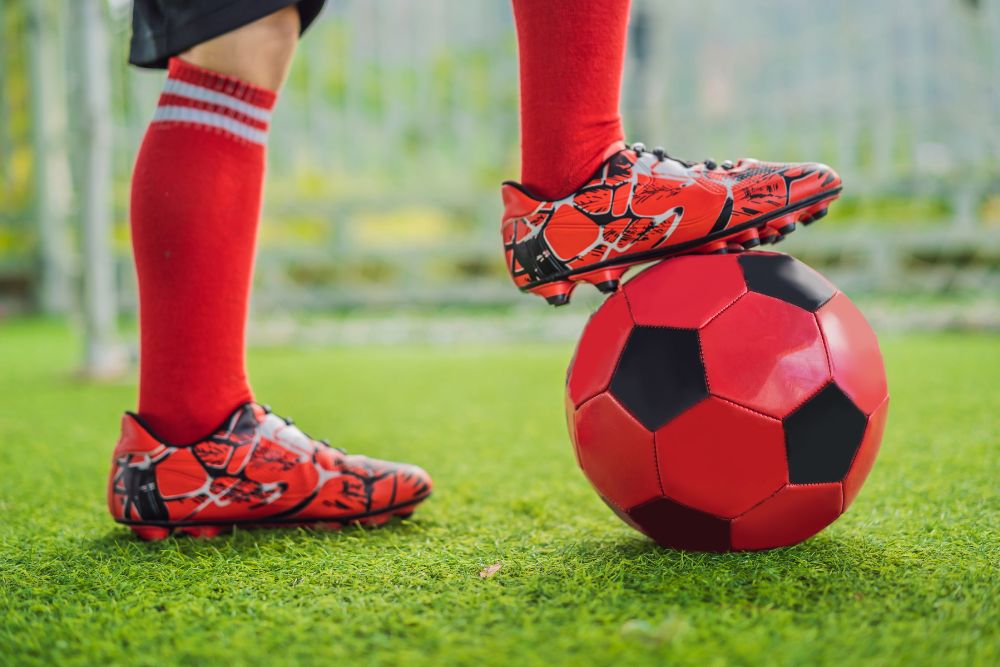
- Indoor court
Indoor courts are smooth wooden or concrete surfaces where indoor sports like handball and futsal are played. Cleats made for such surfaces are designed without studs on them.
Cleats for indoor courts are designed with a flat rubber sole for traction. As a result of their flat sole design, indoor soccer cleats can be worn casually without discomfort or injury to the feet.
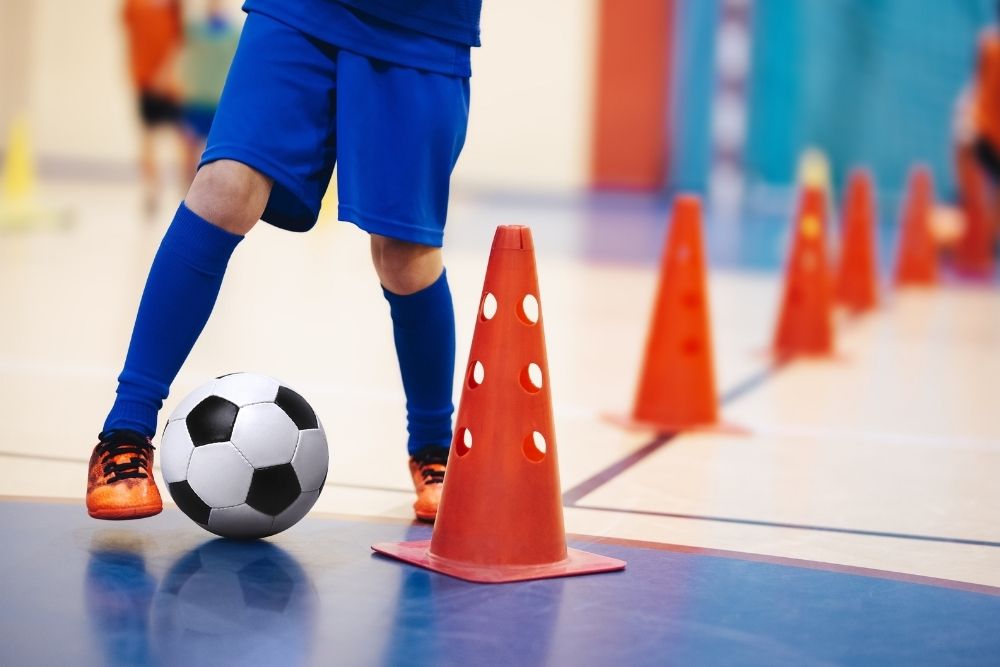
- Soft ground
Soft-ground soccer fields are muddy and slippery especially after it rains. Most soccer cleats can’t work in such a condition. Cleats designed for soft ground are similar to firm ground cleats and some have detachable studs.
Their studs are mostly made with metal so they can sink deeper when used on muddy fields. Some leagues disallow the use of such cleats because their metal studs can cause severe injury to players on the pitch.
Using such cleats on indoor surfaces will cause severe damage to both the surface and your feet. Unless you are playing in a region with lots of rain and muddy fields, this is one of the soccer cleats you should avoid.
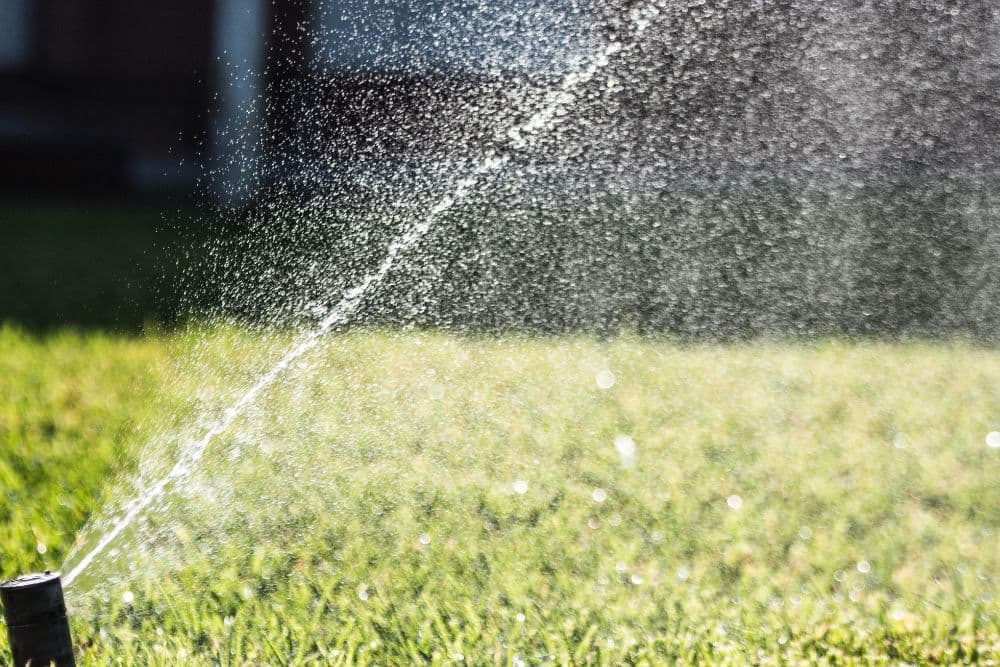
- Firm ground
These outdoor soccer fields are usually firm, dry, and covered with either natural or artificial grass. Cleats meant to be used on them are designed to provide additional traction.
They are fitted with a series of either conical or blade-shaped non-removable studs. These cleats shouldn’t be used on indoor turf fields because their hard sole plate and long studs can hurt the feet and also damage the surface.
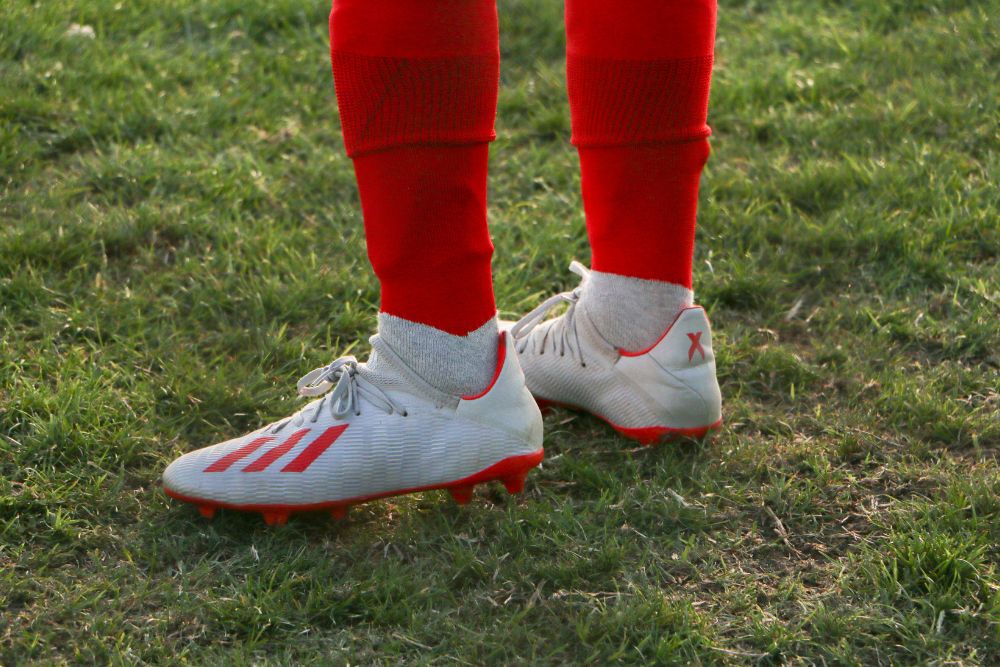
- Hard ground
Hard ground fields are mostly made of patches of sand and rock which requires special kinds of cleats to play effectively. Cleats designed for use on the hard ground have short cone-shaped studs to better distribute pressure on the feet.
Their studs allow for easier maneuverability and also reduces the chances of an injury. Due to their design, they can cause serious damage to indoor surfaces when used on them.
Reasons why outdoor soccer cleats are bad for indoors
There are numerous reasons why outdoor soccer cleats are bad for indoor soccer arenas. Below is a list explaining some of the characteristics of outdoor cleats that make them bad for indoor soccer.
- Comfort
When it comes to the game of soccer, the level of comfort offered by soccer cleats is paramount to how well a player will perform on the field. Using a pair of cleats on surfaces they weren’t designed for will surely cause you discomfort.
For example, when outdoor soccer cleats are used on a futsal court, the studs will create pressure points on your feet. On an outdoor surface, that pressure goes into the ground. However, in a solid futsal court where it can not dig into the ground, it comes back to you.
The pain of the pressure points will make them uncomfortable and stop you from performing optimally. Consider yourself lucky if you don’t end up with painful blisters at the end of the game.
- Grip
While indoor soccer cleats have a flat patterned durable rubber outsole for traction, outdoor cleats are designed with studs on their outsole to increase traction on outdoor fields.
When players run or walk in them, it digs into the ground and helps them stay balanced. Without natural ground, outdoor soccer cleats can’t function adequately since they can’t penetrate the ground to offer the desired traction.
Therefore, using outdoor soccer cleats on indoor surfaces will increase your chance of slipping and falling. Indoor soccer cleats, on the other hand, have flat soles that literally stick to the flat surface to give stability to the players.
Also, the studs or spikes on the outsole of outdoor soccer boots are often designed with either hard rubber or metal. Wearing such a cleat on an indoor surface would destroy the surface of the indoor court or AstroTurf.
- Durability
Outdoor soccer cleats can last from 6 months to a year when used on the right surface. Using them on indoor surfaces can make them degrade faster.
The studs will wear out because of constant rubbing on the indoor court—and outdoor soccer cleats are ineffective without the studs.
Professional soccer players are often advised to replace their soccer cleats after 3,000 to 5,000 miles of usage on the right surface. If you are always running to the sports shop to change your soccer cleat, it may be because you are using them in the wrong environment.
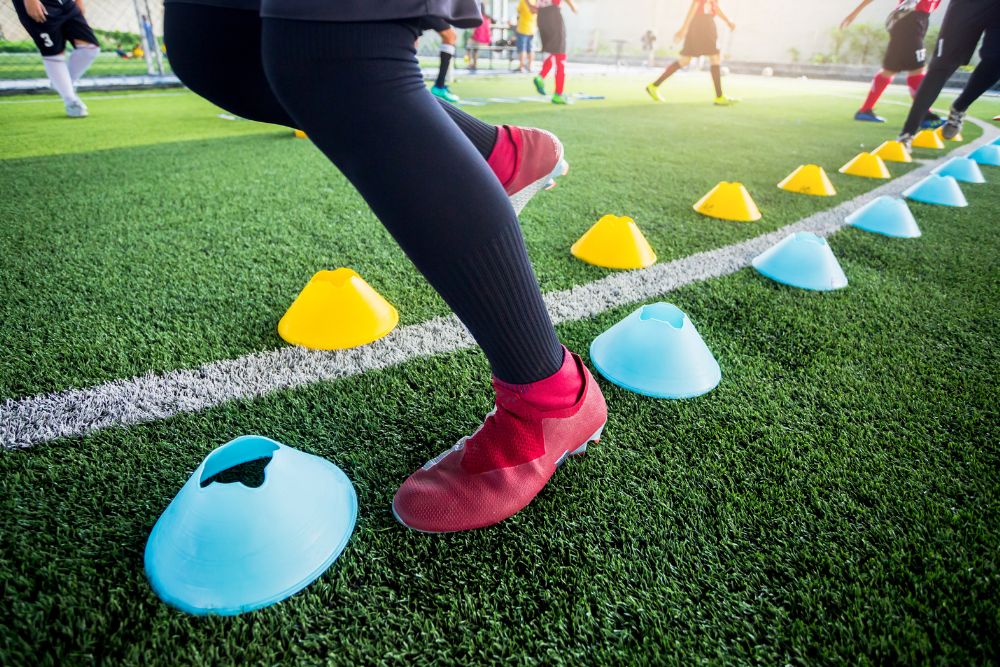
Conclusion
When playing soccer professionally, it is advisable to wear the right kind of gear. Every soccer gear is carefully designed for specific purposes.
For a player to perform optimally on the pitch, they must wear the right gear. Wearing soccer cleats on the wrong surfaces will not only affect the quality of your game, but it can also cause you serious injuries.
Apart from causing physical harm, wearing the wrong soccer gear can also cause harm to the playing surface or become a threat to your fellow players. While you try to enjoy the game, never do anything that will jeopardize your safety.
Hi there, I’m Jay.
Soccer is everything in my life! My friends and I have created this blog with all our enthusiasm, passion, and understanding after years of playing pro soccer. Hope you will enjoy it!
